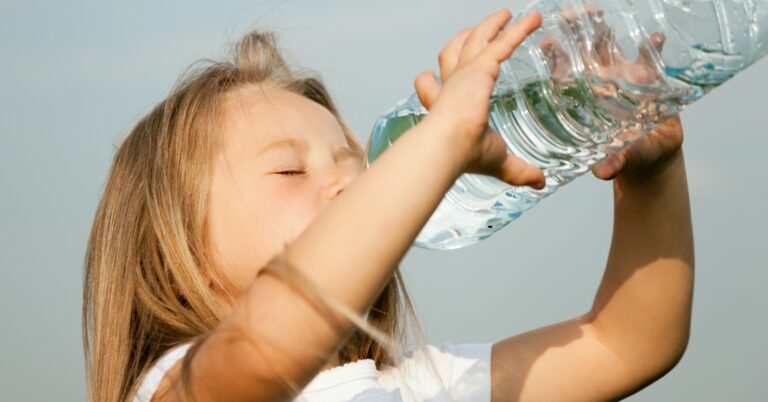When it comes to protecting your child’s delicate skin from harmful sun rays, not all sunscreens are created equal. Some key features can significantly enhance their effectiveness and safety.
As a seasoned parent and a diligent researcher, I’ve discovered that there are 9 essential features you must look for in every kid’s sunscreen. These critical elements ensure not only the maximum protection against harmful UV rays but also guarantee the safety and comfort of your child’s skin.
Understanding the importance of each feature will empower you to make informed decisions as you navigate the vast world of children’s sunscreens. This knowledge will enable you to protect your child effectively, reducing their risk of skin damage and potential health issues in the future.
In this article, we’ll delve into these 9 crucial features, shedding light on why each one matters and how it contributes to the overall effectiveness of a kid’s sunscreen. This will arm you with valuable information for your next sunscreen purchase.
Let’s explore these must-have features, so you can confidently choose a sunscreen that provides optimal protection for your child.
1. Broad spectrum protection
Broad spectrum protection is the first and most important feature to consider when choosing a sunscreen for your child. A broad-spectrum sunscreen protects against both UVA and UVB rays, both of which can damage the skin and lead to skin cancer.
UVA rays penetrate deep into the skin and are responsible for premature aging, wrinkles, and some types of skin cancer. On the other hand, UVB rays burn the superficial layers of the skin and play a key role in the development of skin cancer.
Choosing a sunscreen labeled as “Broad Spectrum” ensures that your child is protected from all harmful effects of the sun’s rays. This label means the product has passed specific tests showing it protects against both UVA and UVB rays.
2. Appropriate Sun Protection Factor (SPF)
The Sun Protection Factor (SPF) is a measure of a sunscreen’s ability to prevent UVB rays from damaging the skin. Essentially, it tells you how long it would take for the sun’s UVB rays to redden your skin when using the product exactly as directed versus the amount of time without any sunscreen.
For instance, if your child’s skin would normally burn after 10 minutes in the sun, applying an SPF 30 sunscreen would theoretically allow them to stay in the sun 30 times longer without burning. However, this is an estimate and can vary depending on skin type, intensity of sunlight, and amount of sunscreen used.
Dermatologists recommend using a sunscreen with an SPF of at least 30, which blocks 97 percent of the sun’s UVB rays. Higher-number SPFs block slightly more but no sunscreen can block 100 percent of the sun’s UVB rays.
3. Water resistance
Believe me when I say, not all sunscreens can withstand a good old splash in the pool.
I remember a summer holiday a few years ago when I took my daughter to the beach. I lathered her up with what I thought was a high-quality sunscreen. But after a few dives in the ocean, I noticed her skin turning pink.
That’s when I learned about water-resistant sunscreens.
Water-resistant sunscreen is specially formulated to stay on the skin even when your kid is splashing about in the water or sweating up a storm.
It’s a game-changer, especially if your little ones are water babies like mine.
But, “water-resistant” doesn’t mean “waterproof”. You still need to reapply it every couple of hours and immediately after they’ve been swimming or sweating. Now, I never hit the beach without a bottle of water-resistant sunscreen in my bag.
So, trust me on this one, always opt for water-resistant sunscreen to ensure your child remains protected, even when they’re having fun in the water.
4. Free from harmful ingredients
Navigating the sunscreen aisle can often feel like a chemistry exam with a line-up of ingredients that are hard to pronounce.
One thing to remember is that some sunscreens contain chemicals that can be harmful, especially for children’s sensitive skin.
Oxybenzone and retinyl palmitate, commonly found in sunscreens, have raised concerns due to their potential to cause skin allergies and other adverse reactions.
Instead, look for sunscreens with ingredients like zinc oxide and titanium dioxide. These are mineral-based ingredients that sit on top of the skin and reflect the sun’s rays, rather than absorbing them.
When you’re shopping for your kid’s sunscreen, keep in mind to check the label. A sunscreen free from harmful chemicals is not just a better choice, it’s a must-have feature.
5. Kid-friendly application
Regardless of how effective a sunscreen is, it’s useless if your child refuses to use it. A kid-friendly application can make all the difference in ensuring regular use.
Look for sunscreens that are easy to apply. Some come in spray versions that are quick and convenient, but ensure you spray enough to cover all exposed skin and rub it in to cover evenly. For the face, a stick version can be easier to apply and less likely to get into the eyes.
Choosing a sunscreen that’s formulated for kids often means it’s less likely to sting or irritate the skin and eyes. Some products also come in fun colors or have glitter in them, which can make application more appealing to children.
6. Hypoallergenic formulation
If your child has sensitive skin, it’s vital to choose a sunscreen that is hypoallergenic. These sunscreens are specially formulated to minimize the risk of allergic reactions. They are free from common allergens and irritants such as fragrances and dyes.
Hypoallergenic sunscreens typically contain physical blockers like zinc oxide and titanium dioxide, which are less likely to cause skin irritation and are safer for children.
Even if a product is labeled as hypoallergenic, it’s still possible for a child to react to it. It’s always a good idea to do a patch test before applying it all over your child’s body.
7. Environmentally-friendly
In our quest to protect our children from the sun, it’s crucial not to forget about the impact of these products on our environment. Many sunscreens contain chemicals that can harm aquatic life when they wash off in the ocean or pool.
Some ingredients, such as oxybenzone and octinoxate, have been found to contribute to coral bleaching and are toxic to certain fish species and other marine life. As a result, some places with heavy tourism and coral reefs have even banned sunscreens containing these ingredients.
Choosing a sunscreen that is labeled as “reef-safe” or “biodegradable” means it is free of these harmful ingredients and will break down naturally in the environment, causing less harm to marine life.
8. Clear expiry date
One often overlooked detail when purchasing sunscreen is the expiry date. Like most skincare products, sunscreens have a shelf life and can lose their effectiveness past their expiration date.
Expired sunscreen may not provide the level of protection indicated on its packaging, leaving your child’s skin vulnerable to sunburn and UV damage. Additionally, over time, the consistency of the product can change, making it less pleasant and more difficult to apply.
Always check the expiry date before purchasing and aim to buy a sunscreen with a long shelf life. Also, remember that once opened, a sunscreen should ideally be used within one year.
9. Approved by a dermatologist
While all these features are important, the ultimate seal of approval comes from a dermatologist.
Dermatologists are skin experts, and their endorsement means the sunscreen has been thoroughly tested for safety and efficacy.
A dermatologist-approved sunscreen gives you peace of mind that you’re making the best choice for your child’s skin health.
When you’re standing in that sunscreen aisle, make sure to pick a bottle that’s dermatologist-approved. It’s the most reliable way to ensure your child’s skin is protected and cared for.
Making the right choice
Having the right sunscreen for your child is more than just a summer necessity; it’s an essential step in safeguarding their skin health for years to come. As parents, we’re not just protecting their skin from immediate sunburn, but also reducing their risk of developing skin cancer in the future.
Choosing a sunscreen can be overwhelming with so many options available. However, with these key features in mind, you can navigate this decision with confidence. The goal is to find a product that offers effective protection, is safe for your child’s skin and the environment, and is something your child will be willing to use regularly.
Your child’s skin is precious. Taking the time to understand what makes a good sunscreen and being diligent about its application is one of the most significant steps you can take towards their long-term health. Protecting your child’s skin is an investment in their future – a future where they can enjoy the sun safely and responsibly.








